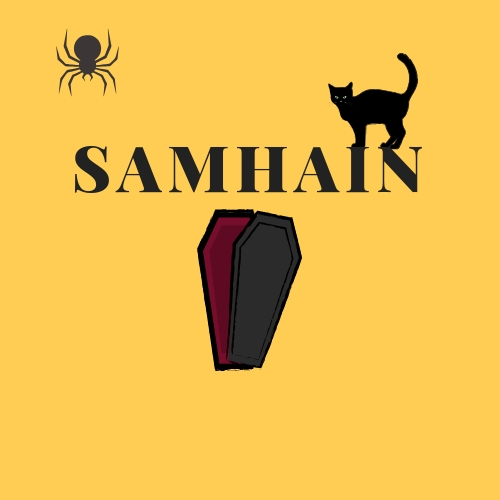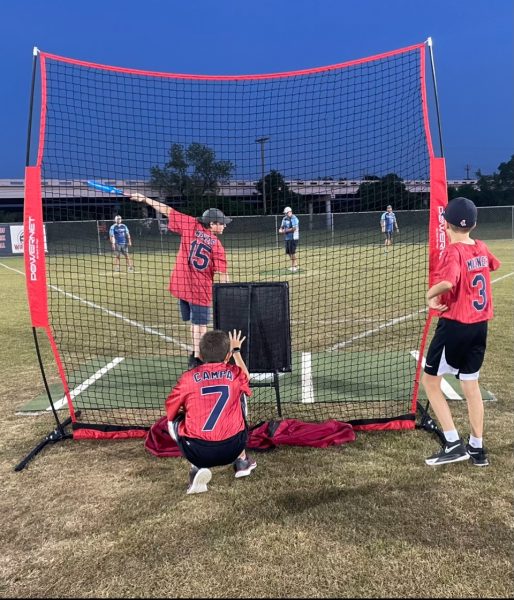Samhain: the Original Halloween
The Halloween before Halloween.
What is Samhain?
Mostly known as the origin of Halloween, Samhain (pronounced saah-win or saah-ween) is a Celtic holiday that is observed in Ireland and Scotland. Meaning “summer’s end”, it’s celebrated from October 31st to November 1st. These dates are the halfway point between the Autumn Equinox and Winter Solstice. Samhain is a festival of death; a time when the border between life and death grows weak and allows spirits to enter the mortal world. It also marks the end of harvest season.
Samhain was believed to be the day that Beira, also known as Cailleach or the Blue-Faced Hag, ruled the living world. Beira is known as the queen of Winter; she has blue skin and an overwhelming appetite for children, whom she wears the tanned skins of. The end of her rule is observed as the Winter Solstice, the day she drinks from the Fountain of Youth and grows younger until the next year.
During Samhain, familiar spirits were welcomed into homes while evil ones were kept away. To prevent themselves from being harmed, the living dressed up as scary creatures and ghosts. This is where the idea of the Halloween costume comes from. Bonfires were also lit as another form of protection, as light was believed to scare the entities who preferred lurking within the comforts of shadows.
Celebration and Rituals
Much like Halloween, the celebration of Samhain also involves food and sweets. It’s just not in the way you’d think.
During Samhain, families would partake in a ritual known as a “Dumb Supper”. A Dumb Supper is a family dinner where an empty plate is placed at the head of the table and filled with the same food that everyone alive is eating. The living must sit in absolute silence and not look at the chair or plate due to the misfortune that would be brought upon anyone that sees the dead. After the supper, the food on the untouched plate would be taken to a wild location and placed on the ground for homeless spirits and animals. Sometimes, the food was given to the less fortunate.
A less somber Samhain tradition is soul cakes, the original sweets off Halloween. Although they were definitely not as exciting as a Snickers Bar, the small, sugary cakes could be eaten by living and dead alike. They were easy to make and delicious to eat.
Soul Cakes
While soul cakes shared the same name, they didn’t always have the same appearance. Some soul cakes were a simple shortbread cookie; others were decadent fruit tarts. Some people even made them with rice flour, but it generally just depended on what type of grain was accessible.
While soul cakes themselves are great, some tell tales of using them for not-so-fun purposes. One story goes that whoever picked the burnt cake out of the pile would be used as a human sacrifice the following year. However, this is most likely just a tale meant to scare people around the Samhain bonfire, and human sacrifice doesn’t even occur anymore. At least, not as much as it used to.
Trick-or-treating is also something the two holidays have in common. However, children received actual food, like soul cakes, rather than candy during Samhain. The tradition eventually evolved into a more modern one.
Modern Day Celebration
Though Samhain was originally only celebrated in Ireland and Scotland, it’s also celebrated by Pagans, or modern day witches. They too, participate in a Dumb Supper and make soul cakes. In modern times though, Pagans have much more relaxed rituals, like simply taking a walk and observing plants, or setting up some offerings to their dead loved ones on a small altar. Some Pagans take this time to visit the graves of their loved ones and leave flowers.
For witches, Samhain is also a time for communication. More specifically, communication with the dead. As the line between the world of the living and the world of the spirits becomes blurred, it’s much easier to have contact. Scrying, a popular ritual for divination and fortune-telling, is usually done at this time. Ouija boards are also used, though they’re not as popular due to the stigma surrounding them. (DISCLAIMER: Ouija is a very dangerous activity to partake in and can cause great harm on both a mental and physical level. It is not a game. Please refrain from contacting spirits unless you have the proper protection and knowledge. Even so, remember to always play it safe.)
Happy Samhain, and eat lots of candy!

Lyla Boretz is a 13-year-old student with a passion for music and sports. She's played the violin for 5 years, figure skated for two, and did English riding...




















